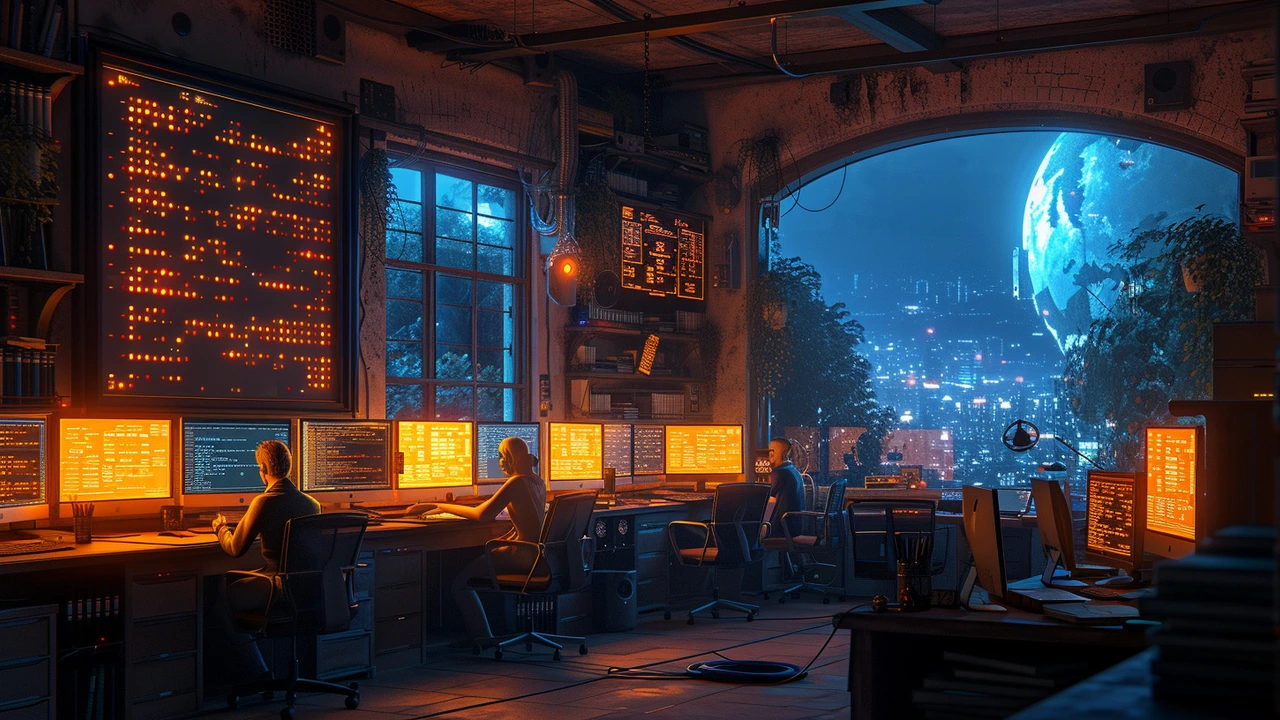Unlocking the Potential: Python's Role in Advancing Artificial Intelligence

Introduction to Python and AI
The synergy between Python and artificial intelligence is a tale of how a programming language can become integral to an entire field of technological innovation. In the serene world of coding, where every language has its domain, Python has emerged as the linchpin of AI development, a title it has proudly held for years. Its straightforward syntax, coupled with its powerful scalability, makes Python an accessible yet potent tool in the hands of AI developers.
At its core, Python’s philosophy of simplicity and readability mirrors the intricacies of human thought processes, making it an ideal language for exploring and implementing AI. It isn't just the language itself but the community and the ecosystem built around it that have propelled Python to the forefront. The vast array of libraries and frameworks, like TensorFlow, Keras, and PyTorch, tailored for AI and machine learning tasks, underscores the language's pivotal role in pushing the frontiers of this revolutionary field.
The Power Behind Python: Libraries and Frameworks for AI
Delving deeper into what makes Python the preferred language for AI, it becomes impossible to overlook its specialized libraries and frameworks. TensorFlow, an open-source library developed by the Google Brain team, has become almost synonymous with neural network-based applications. Keras serves as a high-level neural networks API, designed for rapid experimentation and capable of running on top of TensorFlow, thus democratizing deep learning. PyTorch, on the other hand, offers dynamic computational graphing, a feature highly valued for research and complex dynamic projects in AI.
These tools are not merely aids; they're the building blocks of modern AI applications. From simple chatbots to complex predictive analysis in finance and healthcare, the breadth of projects powered by Python's libraries is awe-inspiring. Beyond these giants, libraries like Scikit-learn for machine learning and Pandas for data manipulation and analysis contribute to Python’s versatility, making it a well-rounded tool for both academic researchers and industry professionals.
Python in Real-World AI Applications
The real test of any technology is in its application, and Python’s contributions to AI are vivid across various domains. In healthcare, we see Python-driven AI being used to predict patient outcomes, personalize treatments, and even in the early detection of diseases through image analysis. In finance, algorithms developed with Python are transforming the way we understand risk, fraud detection, and algorithmic trading. And in the realm of autonomous vehicles, Python’s libraries are at the heart of the software that's teaching cars to navigate and make decisions.
These applications are just the tip of the iceberg. Every day, Python is employed to solve complex problems and to bring the once-fictional dream of intelligent machines into reality. It's the stories of these applications, from startups using natural language processing for better customer service to NGOs leveraging machine learning for environmental conservation, that truly highlight the impact of Python in AI.
Learning Python for AI: Tips for Beginners
Embarking on the journey of learning Python with the goal of diving into AI can seem daunting at first. However, the path is made smoother by the language's inherent simplicity and the wealth of resources available for beginners. The first step is to get comfortable with Python’s basics; mastering its syntax, understanding data structures, and getting accustomed to thinking in algorithms. Online platforms and communities offer tutorials, courses, and projects that can fast-track this learning process.
Beyond the basics, prospective AI developers should immerse themselves in mathematics and statistics, the bedrock upon which AI models stand. Libraries like NumPy and Matplotlib for numerical computing and data visualization become essential tools as one delves deeper. Working on real projects, no matter how small, and contributing to open-source AI projects can provide invaluable hands-on experience. And most importantly, being part of Python’s vibrant community offers opportunities for learning, mentorship, and collaboration.
The Future of Python and AI
As we look towards the future, the bond between Python and AI seems destined to grow stronger. With advancements in AI research, the demand for Python developers skilled in AI technologies is skyrocketing. The continuous improvement and development of Python libraries and frameworks to meet these evolving needs ensure that Python remains at the cutting edge of AI technology. Furthermore, initiatives aimed at making AI more ethical and accessible are likely to leverage Python, given its widespread adoption and ease of use.
The conversation about Python and AI is no longer about whether Python is suitable for AI; it’s about how far they can go together. As AI ventures into uncharted territories, Python’s role will be pivotal in making these technologies adaptable, understandable, and beneficial for humanity. The journey of Python and AI is far from over; it’s just getting started. And for anyone curious about the potential of AI or passionate about technology, there's no better time to be part of this exciting voyage.
Conclusion
Exploring the synergy between Python and AI reveals a dynamic landscape where a programming language enables and advances the most cutting-edge technological innovations. Python’s simplicity, versatility, and the powerful set of tools it brings have made it the backbone of AI development. From enhancing real-world applications across industries to paving the way for future advancements, Python’s role in AI is both foundational and transformative. As we continue to explore the potential of AI, Python’s importance in this field is undeniable, inspiring a new generation of developers to learn, innovate, and push the boundaries of what's possible. For those intrigued by the limitless possibilities of AI, Python is the lantern lighting the way into this brave new world.